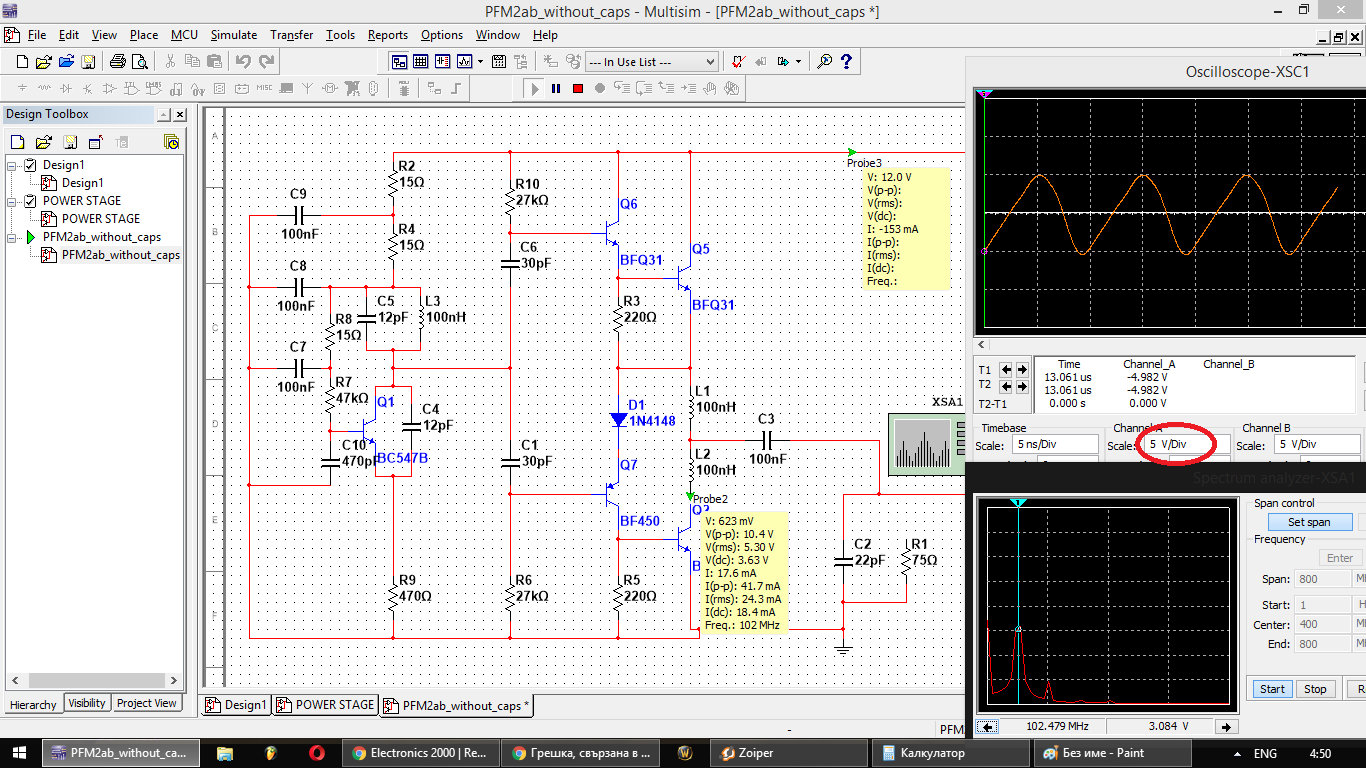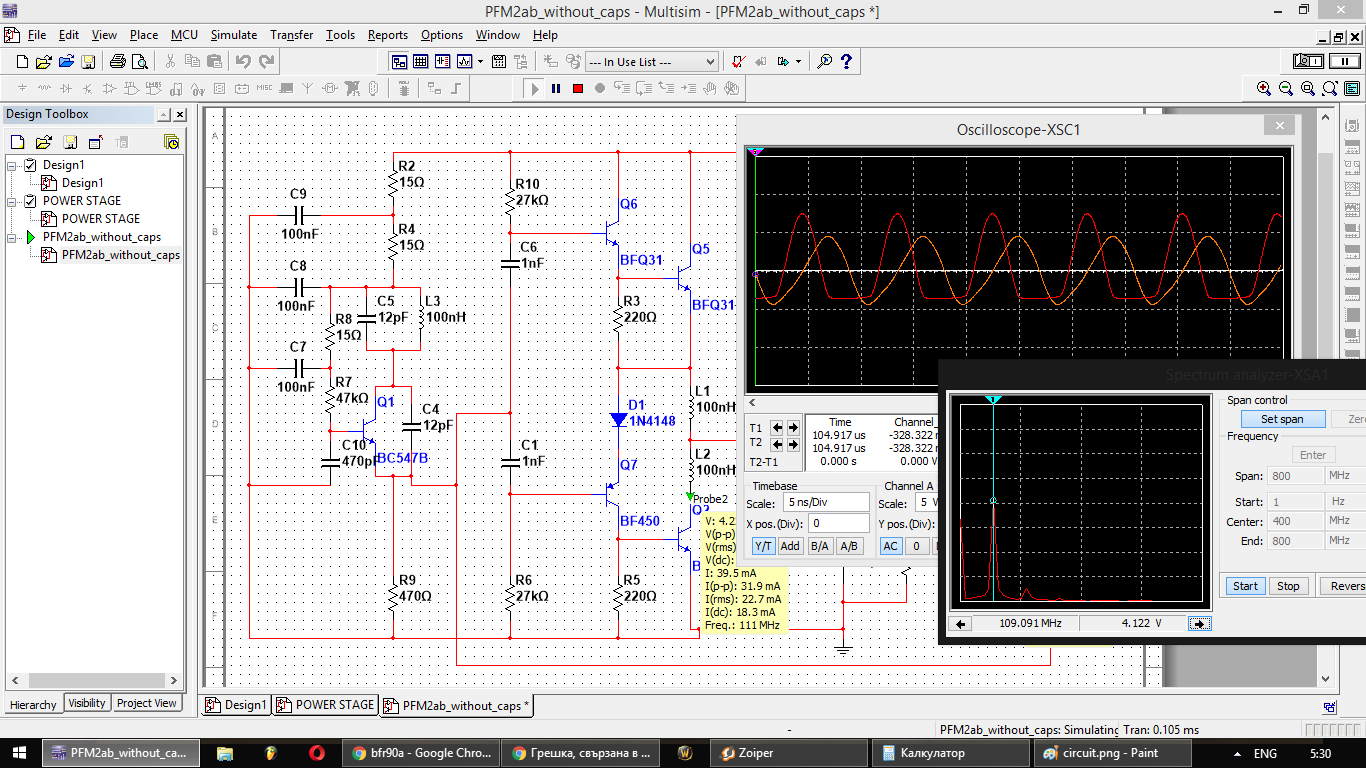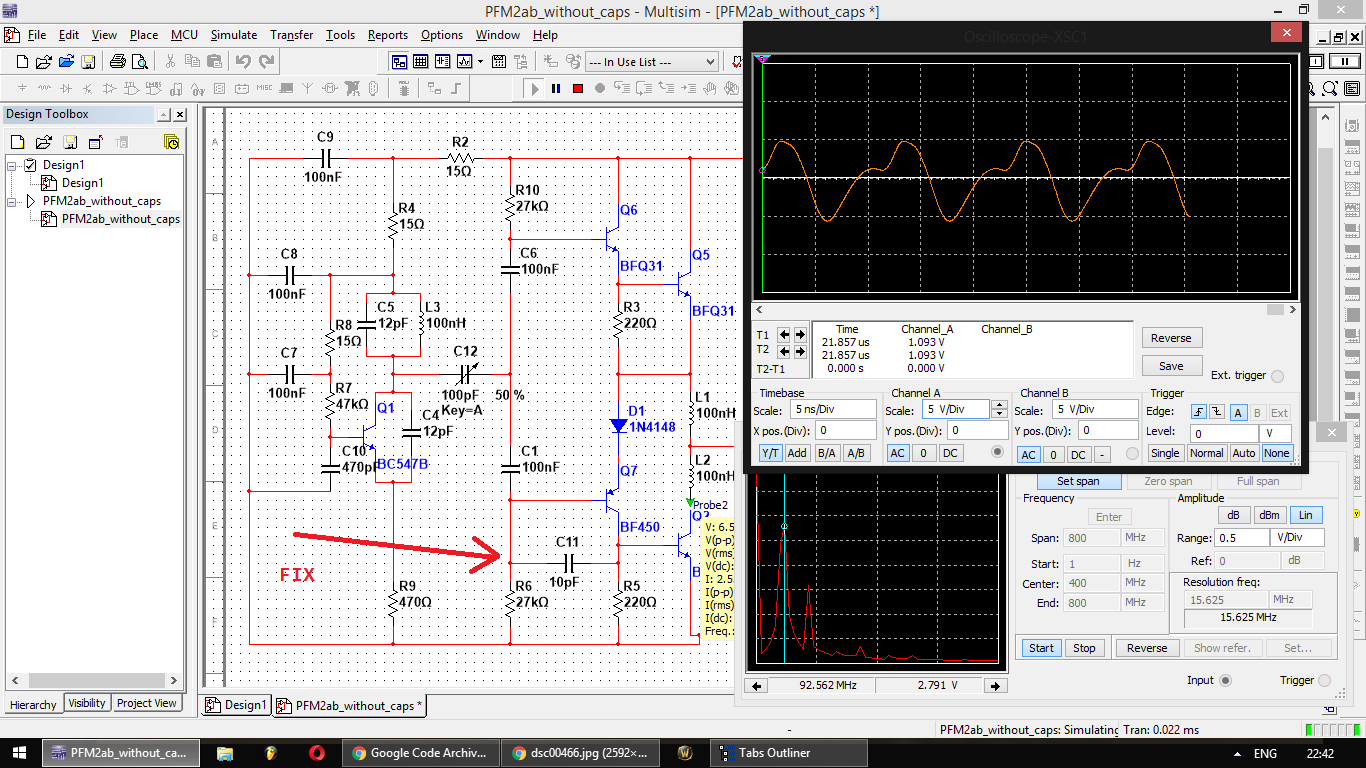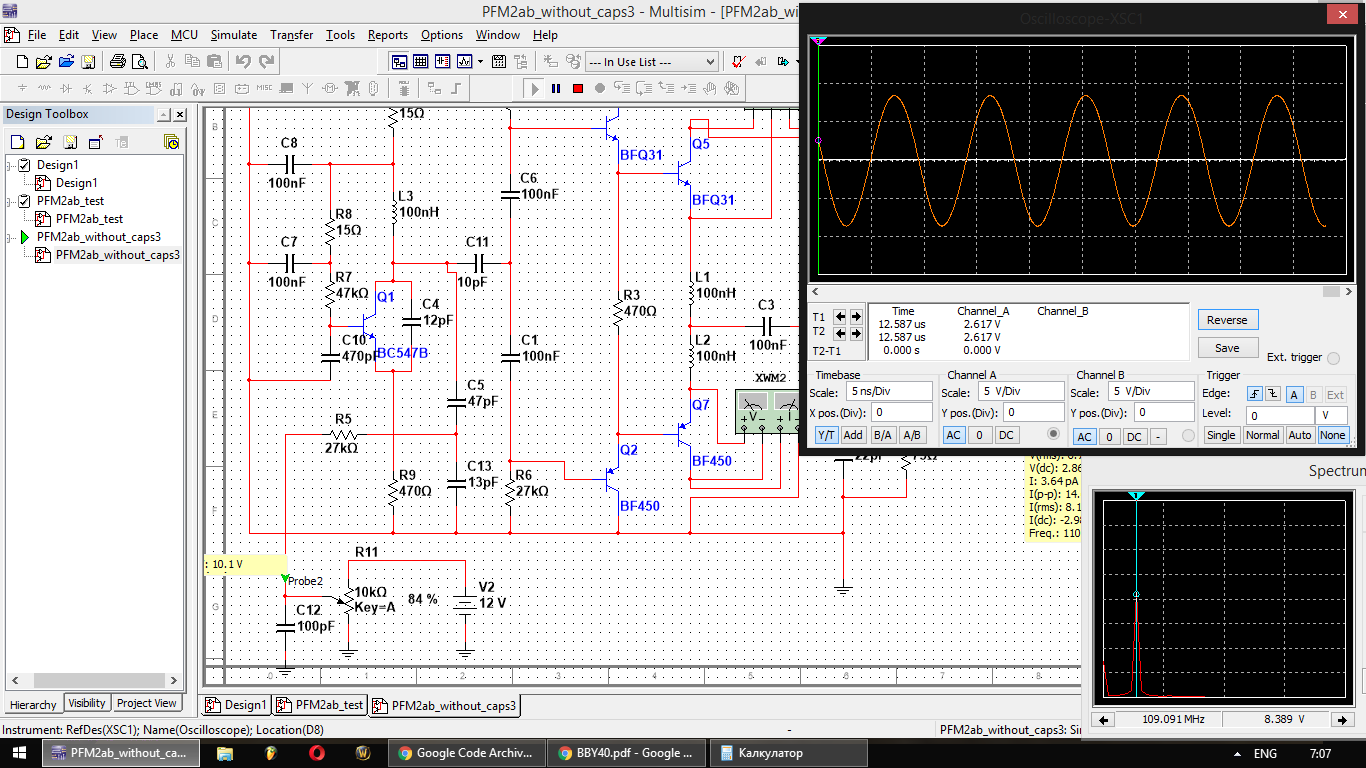Would this transmitter work in reality ?

or this ?

Nobody would design a VHF power stage this way. Looks like a complementary class AB audio amplifier strayed into RF world.
A single transistor with harmonic filter performs much better.
In a real design, parasitic oscillations of the output transistors are likely in this circuit.
Consider that most radio standards require at least 40 dB harmonic suppression.
Why? Im wondering. Because of possible parasitic oscillations ?
Yes if you dont want to transmit at 2-3 different freqs in the same time with 1 transmitter :D
I dont want harmonic suppression, I want to transmit at 90Mhz, 180Mhz and 270Mhz in the same time, with 1 transmitter D:
I see the deffect as effect :D
FvM, I think the only source of parasitic oscillation would be Q7 and a fix for that would be a 10p between the Q7's base and collector.
Im going to etch a PCB and try out.

I like the class B output stage very much because of its current drive capability that can drive a very long antenna or 2-3 short antennas in parallel.
that would probably be highly illegal and upset a lot of people !
This is not a powerful transmitter to upset a lot of people. Actually it won't upset nobody and I will operate it for a short periods of time, when I experiment and learn.
I updated my schematic and think that this output stage cannot oscillate.
This one is very clean and doesn't have parasitic harmonics/transients.
This is because the emitter follower stages are more cleaner/less distorting than the common emitter ones.

I need to use a series resistor with my antenna because Its 250pF with the coaxial cable (measured with my diy LC meter)
..and 250pF load is a nightmare for this emitter follower stage. The antenna and the cable will destroy the outputs without this resistor.
+
Its not difficult to clean a harmonic circuit, just filter it with a high Q low pass filter or the opposite of the "notch" filter.
A common emitter stage harmonic:

A single stage RF amplifier using a common RF BJT transistor, with an LC tuned circuit at the output, will work many times better than your proposal using a modified push-pull audio amplifier. Less headache, better performance, is guarantied.
Good to learn for you but you should listen up the masters here.
This stage can work but it's not a preferred one why ? Because when you check the current consumption and efficiency yo will see easily that the stage is not efficient due to mismatch losses,circuit topology and other contributor.If the efficiency %10, is that a good design or configuration ? Absolutely not..
That's why RF Power Stages have unique configurations that have being developed since more than 100 years.
I suggest you to listen the other's opinions.
OK, I will think about it.
I built a board and it doesn't work. It draws only 20-30 mA..
What are these "mismatch losses" ?
Due to transistors internal capacitances ?
Due to some feedback via air ?
Emitter followers are not used in RF or only push-pull is not use ?
I like emitter followers because they drive capacitive load better than the common emitter. And the antenna is a capacitor between the output and ground.
I was ordered some 2sc1971 to play with and they just arrived.
Little offtopic but I dont want to open new thread:
I am going to build some circuit like this http://electronics-diy.com/electroni...ic.php?id=1232
but I think that its better to add a capacitor between the base and the collector to be sure that the circuit wont oscillate if there is some parasitic inductance between the emitter and the ground.
What value should be this capacitor ?
2.2p 3.3p 3.9p 10p 12p .. more ?
I can found out simulating with Multisim, TINA or LTspice but there are no SPICE model for this transistor in internet.
Another offtopic question:
I have a DVB-T USB tuner that Im using for spectrum analyser with SDR# and it works very well.
How to attentuate the signal from the 2sc1971 power amplifier to plug it into this tuner ?
I dont know what is the standart, what is the maximal voltage that you can plug into tuners.
Another offtopic question: What do you think about this oscillator ? Is it better than colpitts and clapp ?

You cannot learn everything by asking to others.You also have to read/search/dig it.
Here the people who have great experiences- including me- have read tenths of books, thousands of papers and many to concrete/build up their knowledge/skills.
If you intend to enter RF era, the first step is absolutely to read.
I am not learning everything by asking to others. Im learning by myself, with my thinking and asking when I need/want.
No, you dont need to read ! Reading too much is not healthy.
You need to understand electronics and you need to practice. I understand and have skills to design and build a switched-mode power supply powered from 220V!
I built 5 and they work excellent [; I've designed & built also a class D amplifier which works good too.
transmitter work reality 相关文章:
- Power meter in end of transmitter
- Relating Transmitter dBm to uV/m and EIRP
- I need more ideas on underwater transmitter and receiver circuit designs
- CC1101 + SmartRF Studio + old AM HYBRID TRANSMITTER ?
- How FM transmitter/radio works with crystal? What to read?
- can transmitters broadcast at other frequencies?
